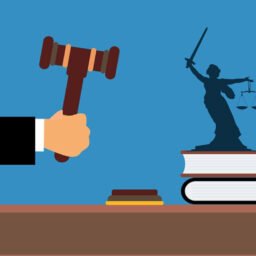Introduction
The ultra-worldly expansion of technology in the past few decades has seen a massive upswing in techno-related production, be it products, academics, employment, law, or the less sought-after growth, the one achieved in crimes. Any such revolutionary proliferation is almost inevitably expected to bring about social changes that impact the daily lives of our everyday humans. And the next part, almost as inevitably necessitated that we need rules and guidelines to regulate this new intangible sphere of science. The massive technology boom that India heeded to, in the late 20th century, saw the formulation of one of the most omnipresent pieces of legislation this country has ever seen. The Information Technology Act, 2000 was constructed piece by piece and brought into immediate effect to stone-wall the country’s cyberspace. However, with every set of guidelines that touches the country’s legal periphery, there is an outcry of support and defiance alike. The motive is always to give the citizens a fair hand at voicing their opinions on the rules that govern them. The unrestrained scrutiny of the IT Act by experts, academicians, legal practitioners, and scholars at large has been a constant occurrence in the headlines and has led to notable changes mentioned henceforth.
Concurrent changes in the IT Act
The IT Act was brought into existence to methodize the regulation of cyberspace and act as a safety measure against internet-borne crimes like the publication of inappropriate or sexually explicit content, identity theft, phishing, cyberbullying, extortion, harassment, or any spectrum of a privacy breach. However, it went through a gazebo of changes and was tailor-made to fit the ideals of a democratic Indian setup. Several principles of the IT Act were measured on a scale of constitutionality and repealed accordingly to parallelly align with the provisions of the Indian Penal Code, the Indian Evidence Act, and the Code of Criminal Procedure. The most controversial and challenging section of the said act turned out to be 66A, which ensued widespread media scrutiny and judicial review. The section explicitly criminalized the offence ofsending, transmitting, drafting messages, via digital platforms like social media agencies of Facebook, WhatsApp, Twitter,or via general means of electronic mail, that may intend to be deceiving, grossly offensive, insulting conceitful, harassing, annoying or inappropriate in nature. This provision allowed any text partially or wholly offensive, often with some amount of subjectivity attached to determining the same, to be classified as a criminal offence punishable under the IT Act.
However, these intricately specific provisions were subject to comprehension as extending beyond reasonable degrees. The terms used in the section such as ‘grossly offensive’ or ‘insulting’ were penchants for vague interpretation and mistranslation. There was no set parameter to delineate the meaning of terms used in its legislation which led to it being subject to arbitrary interpretations and exploitations by authorities and the public at large. The section was soon enough found to be pressing down upon the right to freedom of speech and expression, mentioned in Article 19 (1) (a) and violative of the general public’s right to dissent. Government bodies themselves started using this erratic law to crack down upon the protestors of governmental activities. Anyone and everyone who as much as tweeted against the workings of the government or expressed displeasure for certain policies could be booked and detained on the charges of disrupting cyber peace and causing gross insult.
The objective behind inserting section 66A of the IT Act was the newly-hatched era of technological manifestation and the hypnotism that it ensued amongst the masses. The populace went nuts over technology-driven modes of communication and divulged in an abhorrent use of social media platforms that largely went unregulated. It was realized soon enough that such a vast dimension of operation could not be left untouched by the provisions of law and thus, the matter was formerly legislated upon in 2000. The augmenting lava of dissent erupted in a constitutional battle between the right to free speech granted to the masses and the state’s right to curtail the said right under reasonable and fairly peculiar circumstances. In 2015, the controversy concluded in the case of Shreya Singhal v. Union of India, after an unjustified arrest of two Mumbai women after they made Facebook comments questioning the government’s decision for a total shut down of the city. Popular protest on the issue picked up in pace and the matter was brought before the apex court for hearing and resulted in a vehement challenge to the constitutional validity and subsequent scrapping of Section 66A of the IT Act. The Supreme Court held that the provisions of Section 66A were violative of the fundamental right enshrined in Article 19(1)(a), not saved by the exception of reasonable restriction mentioned in 19(2) and the test of clear and present danger and the probability to incite hatred, that the application of the section was subjected to, did not always withstand the waters.
Hour of demise for 69A
The alleged ‘zombie piece of legislation that the horrid section of 66A was referred to, left a scar and a dismantled trail for further inspection of the Information Technology Act, 2000. The provisions of section 69 stand on a similar ground of regulation however the objective here is for the state to have the right to block any electronic communication, website, or platform spreading information subject to the reasonable grounds mentioned in Article 19(2). 69A was challenged simultaneously along with the constitutionally debated 66A, however, the Supreme Court let 69A persist as a constitutionally congruent section, and why did it occur so, to know that we would have to take a brief look at the section itself. Section 69A provides that the state is legitimately allowed to block or intercept any electronic means of communication on grounds of various susceptibility mentioned in the Constitution such as integrity, national security, foreign relations, public morality, or defamation of persons or courts.
Since these are the same ‘reasonable restrictions’ which the Constitution allows the State to administer on the right to freedom of speech and expression, the Supreme Court assented to its validity as constitutionally permitted parameters of curtailment. However, the disturbing element comes in when we consider how the section is interpreted and applied in concordance with the general rule of statute application. Any law in the country is conferred to be applied and fomented by the act of the Parliament. Meanwhile, what we have seen so far is the haphazard manner of invoking 69A against social media intermediaries and fervent inception of electronically transmitted messages, by a bureaucratic head of the government rather than the consolidated stance of both the house. Terms like integrity, national security, and morality are stretched for interpretation, and this is the nexus behind drafting and inclusively codifying statues, bringing together different opinions, meanings, interpretations, and understanding of keywords.
Executing an act in a like manner ferments the cause of civil unrest and arbitrary appliance and goes on to limit the scope of popular interpretation to the interpretation based on an individual’s understanding. While invoking the section of 69A usually no internal discussion or dialogue is held in the parliamentary houses and no public information is issued explaining the reasoning behind issuing such a ban. Crucially, it is worth noting that the Constitution never aims for a statutory provision to be applied in a draconian direction by a single person or even a group of people sharing the same view. Unless the application is majorly approved and accentuated by people parting more than one belief, it cannot be said to be legally passing. The dubious invocation of 69A without proper reasoning or public deliberation, at the direction of a single entity, is henceforth a breach of the right to freedom of speech and expression and cannot be exempted by the shadows of Article 19(2).
CONCLUSION
The Information Technology Act, 2000 though has been rid of its greatest hurdle after the scraping of section 66A, although, there is much left that needs to be examined thoroughly to prevent a vulgar mishandling of legislated acts. Section 69A of the IT Act gives the head of state the ambit to exercise severe action against security threats and peg into digital privacy in the name of securing national integrity. While the provisions lie for the benefit of the masses, the consequences, when perceived outside the box, could be dire.
Author(s) Name: Anjali Sah (Hidayatullah National Law University, Raipur)
















